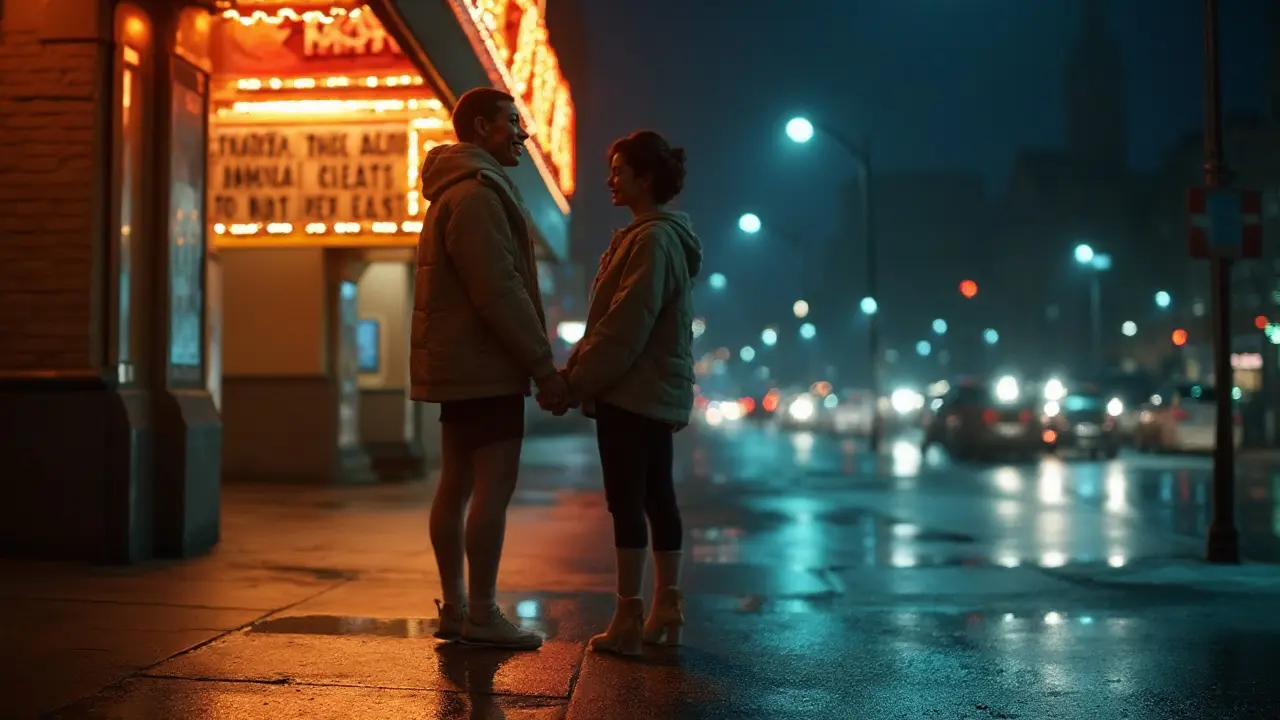Hard truth: the moment you “knew” usually isn’t lightning. It’s a decision you compressed into a scene. Treat it like data, not magic, and it gets useful fast.
Start with a simple frame. A real turning point has three parts: a clear trigger (what you saw or heard), a felt response (what you felt and where), and a choice (what you decided to do next). If one of those is missing, it’s not a moment. It’s a mood.
Here’s the setup behind “midnight ballerina.” It’s a late-night performance, then a small act that reveals character-how they treat staff at 12:40 a.m., how they handle a change, whether they keep a promise when tired. The lesson isn’t about ballet. It’s about seeing values under stress and time pressure.
Quick science to keep you honest: thin-slicing (Ambady/Rosenthal) says snap reads can be decent when you have experience in the domain. If you don’t, they’re guesses. Sleep loss muddies judgment; ~17 hours awake can mimic a 0.05% BAC (Dawson/Reid). Memory is editable; “flashbulb moments” feel vivid but drift over time (Neisser). So, enjoy the spark at midnight, then verify after sleep.
Use a 5-question clarity check the next day: 1) Values: Did they act in line with what they say matters? 2) Safety/Trust: Could I hand them bad news and feel safe? 3) Effort: Is care shown without me prompting? 4) Logistics: Can our real schedules work-nights, weekends, family stuff? 5) Pattern: Have I seen this good behavior at least three times, in different contexts?
Make it measurable. Write a 200-word note titled “Why tonight changed things,” time-stamp it, and rate your certainty 1-10. Recheck in 72 hours. If your certainty holds within 1 point after sleep, work, and a normal day, you likely have signal, not noise.
Act in specifics, not labels. Instead of “Let’s be serious,” try: “I want to date exclusively for 8 weeks, plan two day-time hangouts a week, and meet one friend each. How does that sound?” Concrete steps beat vague vows.
Dating someone on late hours (dancers, nurses, chefs)? Test everyday fit. Schedule two daylight tasks (errand + meal prep), one recovery block (quiet time after a shift), and one social slot with friends. If you can’t find overlap for three weeks straight, that’s data.
Watch common traps: scarcity (it’s late, it feels rare), rescue fantasies, and highlight bias (one golden scene erases red flags). Use the 5:1 check from Gottman-roughly five positive interactions for every negative in conflict. If your ratio flips, the “moment you knew” might be wishful thinking.
And if the moment is about ending it, keep it clean. One clear talk, one boundary, one follow-up. Plan the logistics first (keys, bills, pets), tell one trusted friend your plan, and set a 30-day no-contact window. Clarity sticks when your actions match it.
- What the Moment Really Is
- Case Study: Midnight Ballerina
- The Science Behind Clarity
- Signals You Can Trust
- Validate Before You Act
- Avoidable Traps and Biases
What the Moment Really Is
People call it the moment I knew. In practice, it’s not fate. It’s a fast judgment that feels cinematic because your brain stitched a clean story around a few cues. Understand the mechanics, and you can tell signal from noise.
Think of a real turning point as three parts you can point to: a trigger you observed (words, action, context), a body response you noticed (calm, tension, warmth, urge to pull back), and a choice you made (what you did next). If any piece is missing, you’re not at a decision. You’re in a mood.
Why does this work? Quick reads can be decent when you have experience in the domain. Nalini Ambady and Robert Rosenthal showed that people could predict teacher effectiveness from short, silent video clips with strong correlations to end-of-term ratings. That’s thin-slicing: small samples, surprisingly useful-if you know the terrain.
“What you see is all there is.” - Daniel Kahneman, Thinking, Fast and Slow (2011)
Kahneman’s line is the catch: your brain acts as if the few details you see are the whole picture. Late at night, after a performance or a long shift, that effect gets stronger. Fatigue makes your filters looser, confidence higher, and memory stickier than it should be.
| Finding | Source | Key Stat / Detail | Why it matters for “the moment” |
|---|---|---|---|
| Thin-slicing can predict longer-term judgments | Ambady & Rosenthal (1993) | Predictions from 30s clips correlated up to r≈0.76 with end-of-term ratings | Your snap read can be useful-if you have relevant experience |
| Fatigue impairs judgment like alcohol | Dawson & Reid (1997) | 17 hours awake ≈ 0.05% BAC; 24 hours ≈ 0.10% BAC | Midnight decisions feel clear but can be chemically compromised |
| Flashbulb memories feel certain but drift | Talarico & Rubin (2003) | Confidence stays high while detail consistency drops over months | Your “perfect” memory of the moment won’t stay perfect |
| Stable relationships show a positivity buffer | Gottman (1994; 1999) | About 5:1 positive-to-negative during conflict | One golden scene can’t balance repeated negatives |
So what is the moment really? It’s a small data point that deserves a follow-up, not a tattoo. Treat it like a hypothesis.
Here’s a quick, practical way to handle it the next time it hits-say, after a late show or a 1 a.m. diner stop where you saw real character under stress:
- Capture the trigger. Write one sentence: “I saw X at Y time.” Keep it observable: actions, not vibes.
- Name your body signal. Two words: “felt calm,” “chest tight,” “wanted to leave.” Somatic notes cut through storytelling.
- State the draft decision. “I want to commit more,” or “I need distance.” No hedging.
- Set a 24-hour buffer. Sleep. Hydrate. Do one normal task (gym, laundry). Re-read your note when alert.
- Verify with context. See if the same value shows up in daylight: errands, plans kept, how they treat people when no one’s watching.
Want a tidy checklist you can reuse? Try this.
- Values match: Did their action line up with what they say matters?
- Stress test: Did the behavior hold when tired or inconvenienced?
- Pattern check: Have you seen it at least three times, in different settings?
- Logistics fit: Can your schedules overlap in a normal week without someone burning out?
- Ratio reality: In conflict, are there roughly five positives for each negative over time?
Also, define what a “non-moment” looks like so you don’t fool yourself. If the scene relies on alcohol, a spotlight, or social pressure, flag it as entertainment, not evidence. If your memory of it grows more dramatic each time you tell it, assume drift. If the moment asks for a huge life change right away (quit job, move cities), press pause and gather more data.
Bottom line for this section: the moment is a starting whistle, not the trophy. Capture it, cool it, and then test it against real life. That’s how a midnight spark turns into a solid decision you won’t regret in the morning.
Case Study: Midnight Ballerina
Think of this as a field test for clarity, not a movie scene. The moment I knew happened after a late show, when stress, fatigue, and small choices reveal real values. I’ll map the night, the behaviors that mattered, and how to verify the signal the next day.
Quick context you can sanity-check. Most big U.S. ballet companies run evening curtains around 7:30 p.m., with shows lasting about 2-2.5 hours including intermission. Post-show, dancers typically cool down, meet notes, eat something simple, and leave the stage door close to 10-11 p.m. That late window is perfect for spotting character because decision quality dips with fatigue and routine falls away.
- 10:02 p.m. - Stage door. She exits carrying a foam roller and a small cooler. She introduces me by name to the stage manager and thanks the head dresser by name. Why it’s useful: naming shows attention and respect, not performative niceness.
- 10:12 p.m. - Micro-recovery. She sits for 8 minutes to do ankle mobility and a 60-second calf release. When asked about dinner, she says, “Give me 10 to eat my protein and we go.” Why it’s useful: she protects recovery without drama and offers a plan, not a veto.
- 10:40 p.m. - Change of plan. The late-night ramen spot we picked is closed. She quickly proposes a backup two blocks away that’s open past midnight. Why it’s useful: flexibility under time pressure without blaming or sulking.
- 11:05 p.m. - At the counter. She’s kind to the night-shift cashier and tips 20%. When a friend texts to celebrate a casting update, she replies, “I’ll call you tomorrow-late show + early class.” Why it’s useful: consistent care across relationships; delayed gratification.
- 11:50 p.m. - Boundary check. She says she needs lights out by 12:45 a.m. to make a 10 a.m. class with enough sleep. Invites a short walk, not an all-nighter. Why it’s useful: clear boundary plus an alternative. No guilt trip.
- 12:20 a.m. - Debrief. I ask about a rough second act. She owns a missed count and credits a colleague for saving a timing issue. Why it’s useful: accountability without defensiveness, plus generosity.
None of these are grand gestures. They’re small, consistent signals you can score in real time. Here’s how I noted them so I wouldn’t drift into a rosy edit later.
- Trigger: “She kept a sleep boundary and changed plans smoothly.”
- Felt response: “Relief in my chest; I relax around clear planners.”
- Choice: “Ask for an 8-week exclusive window, with two daytime meets per week.”
Late nights are bias traps, so I brought receipts. Two facts matter most: after ~17 hours awake your performance can resemble a 0.05% BAC, and caffeine sticks around longer than you think. That’s why I waited to lock the decision until the next day and checked if my certainty held.
| Item | Data | Why it matters | Source/Note |
|---|---|---|---|
| Typical evening curtain | ~7:30 p.m.; 2-2.5 hr runtime | Stage door exits ~10-11 p.m. | Published schedules from major U.S. companies (e.g., NYC/ABT) |
| Fatigue vs. impairment | ~17 h awake ≈ 0.05% BAC; 24 h ≈ 0.10% BAC | Late-night “certainty” can be noisy | Dawson & Reid, 1997 (Nature) |
| Caffeine half-life | Average ~5 h (range ~3-7 h) | 8 p.m. coffee still ~50% active at 1 a.m. | U.S. FDA; pharmacokinetic reviews |
| Urban commute window | ~20-45 min post-show | Decision period shifts even later | Transit schedules; venue locations |
How to run your own “midnight test” without making it weird:
- Pick the window. Aim for a late event that ends after 10 p.m. (show, hospital shift end, restaurant close).
- Set two pivots in advance. “If A is closed, we go to B; if B is packed, we grab takeout and walk.” You’re testing flexibility and problem-solving.
- Watch the cross-pressures. Do they keep a small promise when tired? Are they polite to people without social leverage (valet, cashier, rideshare)?
- Score the boundary. Can they hold a reasonable bedtime or next-day commitment without guilt-tripping you or themselves?
- Delay the label. Sleep on it. Write a 150-200 word note the next day about what they did, not how you felt. Re-rate your certainty 72 hours later.
Red flags I filtered for that night:
- Scarcity talk: “This is special, we have to keep it going till 3 a.m.” Pressure plus flattery is a tell.
- Blame shifts: Restaurant closed? If the waiter “ruined our night,” expect future externalization.
- Boundary breaches: Ignoring a next-day class or shift to prolong the date. It feels romantic; it’s reckless.
What made this case actionable was the combo: kindness to staff, recovery discipline, flexible planning, and a clear bedtime boundary. The next day, my certainty score dropped from 9/10 to 8/10 after sleep-still strong. That’s when I proposed a concrete next step: 8-week exclusivity, two daytime meets a week, one friends-introductions plan by week four. She agreed, and we scheduled them on the spot. No grand speech. Just logistics that matched the signal.
If your own test night doesn’t give you multiple aligned signals, don’t force it. Run a second stress context (crowds + delays, or family interaction + time pressure). Consistency across contexts beats a single golden scene every time.
The Science Behind Clarity
When people talk about the moment I knew, they usually mean a sharp feeling that seems obvious and final. Under the hood, your brain is mixing quick reads with slower checks. Daniel Kahneman called these two modes System 1 (fast, automatic) and System 2 (slow, deliberate). Both matter. Fast gives you a signal. Slow makes sure it isn’t noise.
Snap reads can be decent if you’ve seen a lot of similar situations. Nalini Ambady and Robert Rosenthal showed that very short silent clips of teachers (as little as a few seconds) predicted end-of-term student ratings in real classes. That’s thin-slicing: quick pattern picks. The catch? It works best when the domain is familiar. New domain, new people, low light at midnight-you’re guessing more than you think.
Sleep debt twists your calls. A well-cited lab study (Dawson & Reid, 1997) found that about 17 hours awake can impair you like a 0.05% blood alcohol level, and 24 hours like 0.10%. That means a late-night judgment after a long day is literally decision-making with a buzz, even if you didn’t drink.
Sleep loss also cranks up emotion. In a 2007 fMRI study, Matthew Walker’s team reported roughly a 60% jump in amygdala reactivity to negative images after a night without sleep, alongside weaker control from the prefrontal cortex. Translation: you feel more and regulate less. Great for drama, bad for clear calls.
Memory isn’t a hard drive. Flashbulb memories feel vivid, but accuracy drifts. Talarico and Rubin (2003) tracked people’s 9/11 memories and found confidence stayed high while details shifted at about the same rate as everyday memories. So the “exact words at midnight” you swear by may not be exact a week later.
Your brain also rewrites the story by the peak-end rule. Kahneman, Fredrickson, Schreiber, and Redelmeier (1993) showed that people judge past experiences mostly by the peak (best or worst) and the ending, not the total sum. A perfect final dance or a sweet ride home can overshadow hours of mixed signals. Don’t let a shiny end erase the rest of the tape.
In relationships, ratio beats highlight reels. John Gottman’s lab found that stable couples tend to keep about a 5:1 ratio of positive to negative interactions during conflict. A single glowing scene can’t carry weeks of sniping. Track the ratio, not the romantic trailer.
| Phenomenon | Key finding | Practical takeaway | Source |
|---|---|---|---|
| Thin-slicing | Very brief clips can predict real outcomes in familiar domains | Quick reads are useful if you have experience; otherwise, verify later | Ambady & Rosenthal, 1992/1993 |
| Sleep deprivation | ~17h awake ≈ 0.05% BAC; 24h ≈ 0.10% BAC | Delay big calls made late at night or after long shifts | Dawson & Reid, 1997 |
| Emotional reactivity | ~60% higher amygdala response without sleep | Expect stronger feelings and weaker brakes when tired | Yoo et al., 2007 |
| Flashbulb memory | Confidence stays high while details change over time | Write notes the same night; re-check later | Talarico & Rubin, 2003 |
| Peak-end rule | Recall leans on the peak and the ending | Rate the whole night, not just the finale | Kahneman et al., 1993 |
| 5:1 interaction ratio | Roughly five positives per negative predicts stability | Use the ratio as a reality check on the relationship | Gottman, 1994+ |
How do you use this on a late-night date, show, or shift?
- Pause the verdict. If you’re past 16 hours awake, wait until after sleep to decide anything long-term.
- Capture the facts fast. Jot three concrete behaviors you saw (verbatim words, exact actions), not your interpretation.
- Score the whole, not the high. Rate the entire evening across values, effort, and respect, then separately rate the final 15 minutes. If the gap is big, the peak-end rule is in play.
- Run a disconfirming check. Ask yourself, “What would I have needed to see to change my mind the other way?” If you can’t answer, you’re rationalizing.
- Re-test after sleep. Re-read your notes 24-72 hours later. If your certainty shifts more than one point on a 1-10 scale, it was probably state, not signal.
- Track the ratio for two weeks. During conflicts, tally positives vs negatives. If you can’t keep near 5:1, treat the midnight scene as a nice moment, not a forecast.
This blend-quick reads, sleep-aware timing, written facts, and ratio tracking-keeps the magic of the night while giving you guardrails. It doesn’t kill romance. It just keeps a strong scene from writing the whole script.

Signals You Can Trust
You don’t need mind reading. You need repeatable signs you can spot when you’re tired, excited, or in a crowd. Reliable signals show up across time and settings, and they survive a sleep cycle.
Start with small, observable behavior. People can talk a big game at midnight. What matters is what they do when the show is over, the bar is closing, and someone needs help stacking chairs. That gap-words vs. actions-is the most useful data you’ll get from the midnight ballerina moment.
Look for these high-signal behaviors:
- Turns toward bids for attention. In Gottman’s lab work, couples who stayed together turned toward “bids” (little bids like “look at this” or “texted you that meme”) about 86% of the time; couples who later divorced did so about 33%. That’s a huge gap you can measure in a week.
- Positive-to-negative ratio during conflict. Stable couples keep roughly 5 positive interactions for every 1 negative during disagreements (Gottman’s 5:1 rule). If your ratio drops below that regularly, treat it as a warning.
- Repair attempts land. Healthy partners try to de-escalate (“You’re right, I got sharp. Can we reset?”) and the other person lets it work. When repair attempts bounce off, fights spiral.
- No contempt. Eye-rolling, mocking, or speaking from a place of superiority is the strongest predictor of breakups in Gottman’s research. One instance isn’t destiny, but a pattern is a deal-breaker.
- Follow-through under fatigue. Keeping a small promise after a long day is a strong predictor of reliability. If they say, “I’ll text when I get home,” and they do, consistently, that’s trust in motion.
- Respect for boundaries. “No” is heard the first time. Consent is checked, not assumed. Boundaries handled well when emotions run hot beat any romantic speech.
- Kindness to low-status folks. How they treat staff, rideshare drivers, or the person fixing the lights after the show says more than how they treat you when they’re trying to impress.
“Trust is built in very small moments.” - Brené Brown, The Anatomy of Trust
Ground your read with two simple facts. First, sleep debt skews judgment. Staying awake ~17 hours can impair you like a 0.05% BAC (Dawson & Reid, 1997). So note the spark at night, but verify after rest. Second, memory is confident, not perfect. “Flashbulb” memories feel crisp and still drift (Ulric Neisser’s challenger studies). Write what you saw while it’s fresh, then re-check later.
Here’s a quick field test you can run this week:
- Count bids. For 48 hours, tally how often each of you turns toward small bids (texts, “look at this,” “want tea?”). You want most bids met with a response, even a short one.
- Log the 5:1 ratio. During one disagreement, quietly count positives (curiosity, soft tone, validation, humor that lands, solutions) and negatives (interrupting, blame, eye-rolling, name-calling, threats). If you can’t keep near 5:1, slow down and try a repair.
- Test a tiny promise. Ask for one clear, time-bound favor (“Can you send that email by 10 a.m.?”). Check completion without reminders. Repeat in a new context two more times.
- Boundary check. State one limit (“I can hang until midnight, then I’m heading out”). See if it’s respected without pushback.
- Daylight drill. Do a boring task together (grocery run, bill pay). Boring brings out baseline behavior. You’re checking teamwork, not charm.
What about vibes and first impressions? Thin-slicing research (Nalini Ambady & Robert Rosenthal) shows quick reads can be accurate when you have real experience in the domain. If you don’t, treat your first read as a hypothesis and look for repeatable proof.
For fast scoring, use this 10-point checklist. One point each for: turns toward bids, 5:1 conflict ratio, accepts repair attempts, no contempt, keeps small promises, respects “no,” kind to service staff, shows up on time, follows through after tired days, and owns mistakes without excuses. Eight or more, strong signal. Five to seven, keep watching. Four or less, slow things down.
Tip for night-owl schedules (dancers, chefs, nurses): plan one “recovery” hang (quiet, low light, no asks) after a late shift and one “function” hang (errands, planning) on a different day. You want to see care in both recovery and function modes, not just date-night mode.
If you catch yourself justifying red flags because the night felt special, run a 72-hour check. Write what you saw, sleep on it twice, see them in a different context, then decide. Real signals repeat. Hype fades.
Validate Before You Act
Before you act on a moment I knew feeling, hit pause and run a quick validation loop. You’re not killing the spark-you’re checking if it holds up when you’re rested, outside the glow of a big night, and under normal life pressure.
Here’s a simple, evidence-backed way to do it. It’s short, repeatable, and kind to both people.
Sleep first, then decide. The CDC recommends adults sleep 7+ hours a night for clear thinking. Performance after ~17 hours awake looks like a 0.05% BAC; 24 hours maps to ~0.10% (Dawson & Reid, 1997). If you’re making a call after midnight, sleep on it, then reassess.
Replicate the moment in three contexts. See if the same good behavior shows up in at least three different settings within two weeks: around friends, under small stress (late train, wrong order), and during a boring errand. You’re testing for a pattern, not a highlight reel.
Write and re-rate. Draft 200 words titled “Why last night mattered,” and rate your certainty 1-10. Re-check after 72 hours and one normal workday. Flashbulb-memory studies (Talarico & Rubin, 2003) show confidence stays high while details drift; by a year, consistency sits near ~60%. A 3-day re-rate keeps you honest now.
Get an outside read. Share your note with one friend who’s seen you in past relationships. Ask for two questions only: “What am I missing?” and “What would make this more solid?” Avoid asking for a verdict; you want blind spots, not votes.
Do a logistics stress test. If they work nights (dancer, nurse, chef), schedule: two daytime tasks together (errand + meal prep), one recovery block after a late shift, and one social hang. If you can’t make calendars work three weeks straight, that’s useful data.
Sample a tiny disagreement. Pick a small topic with real stakes (budget for a weekend, how to split chores). During the talk, aim for a 5:1 ratio of positive to negative interactions, a benchmark from Gottman’s long-term research on stable couples. If contempt or stonewalling pops up fast, slow down your next-step plans.
Make the ask concrete. If you move forward, set a short trial: exclusive for 8 weeks, two daytime dates weekly, meet one friend each, one check-in after 30 days. Specifics beat labels, and they’re easier to evaluate.
“What you see is all there is.”
- Daniel Kahneman, Thinking, Fast and Slow (2011)
That quote is the trap. One magical scene feels complete, but it’s just a slice. The steps above widen the frame without killing momentum.
Here are the core checks and why they matter:
| Check | What to Do | Key Data/Stat | Evidence/Notes |
|---|---|---|---|
| Sleep Reset | Decide after a full night’s sleep | Adults need 7+ hours/night | CDC Sleep guidelines |
| Fatigue Bias | Avoid major decisions when very tired | 17h awake ≈ 0.05% BAC; 24h ≈ 0.10% | Dawson & Reid, 1997 |
| Memory Drift | Write now, re-rate in 72h | Flashbulb memory consistency ~60% at 1 year | Talarico & Rubin, 2003 |
| Conflict Sample | Test a small disagreement | Stable couples show ~5:1 positive:negative | Gottman longitudinal studies |
| Pattern Check | See behavior in 3 contexts | Replicate across time + settings | Heuristic to reduce one-off bias |
Tips to make this stick without turning it into homework:
- Time-box it. Run the full loop in 7-14 days. Momentum matters.
- Use the same ruler. Keep your certainty ratings in the same context (same time of day, similar mood) so you’re not grading with a new curve each time.
- Name the non-negotiables. Pick three (safety, reliability, kindness under stress are solid choices). Judge behaviors against those, not vibes.
- Share your process. Tell them you’re excited and you validate big choices. That builds trust instead of mystery.
If the validation loop strengthens your case, take the next step with clear terms. If it weakens it, don’t force it. You didn’t overthink-you saved both of you time and energy.
Sources to know: CDC sleep recommendations; Dawson & Reid (1997) on wakefulness vs BAC; Talarico & Rubin (2003) on flashbulb memory; Gottman’s 5:1 ratio from decades of couple research. These aren’t rules-they’re guardrails so your best call survives daylight.
Avoidable Traps and Biases
Your brain loves shortcuts. They help in traffic, not always in dating. If you think you had your moment I knew, run it through these checks so a great scene doesn’t turn into a bad call.
Start with the easy one: scarcity. Late night, limited time, one last train-your brain flags it as rare, and rare feels valuable. That’s the scarcity effect (Cialdini). Worchel’s 1975 “cookie jar” study showed people rated the same cookies as more desirable when fewer were available. In dating, limited access can make ordinary behavior look special.
Next is the halo effect. One standout trait (grace on stage, killer charm) spills over into assumptions about honesty, kindness, or reliability. Thorndike named this in 1920. It’s a rating error, not a virtue test. Fight it by separating traits: “great performer” doesn’t equal “great partner.”
Peak-end rule is sneaky. We over-weight the most intense part and the end of an event. Kahneman and Redelmeier’s 1993 colonoscopy study showed people judged the whole experience by peak pain and how it ended, not by duration. So a magical encore at 12:58 a.m. can overrule six hours of mixed signals. Don’t let the ending write the whole story.
Fear or adrenaline can also hijack attraction. Dutton and Aron (1974) found men on a scary bridge were far more likely to call a female experimenter later than men on a safe bridge. Arousal was misread as attraction. Swap bridge for a high-energy show, loud room, or after-midnight buzz-same risk.
Sleep debt tilts judgment. After ~17 hours awake, your performance can look like a 0.05% BAC; at 24 hours, about 0.10% (Dawson & Reid, 1997). If your turning point happened while tired, slow down decisions until after rest.
Confirmation bias glues it together. Once you like someone, you look for proof and skip disconfirming data. Sunk cost piles on (Arkes & Blumer, 1985): time, money, and feelings invested push you to continue even when the facts aren’t good. Write down both sides to break that loop.
- Use the 24-hour rule: no big promises or exits until after sleep and a normal meal.
- Run a “3 contexts” test: see them in at least three different settings (workday errand, friend hang, minor stress) before leveling up.
- Separate traits: list behavior you actually saw vs. what you inferred.
- Ratio check: during conflict, aim for about 5 positive interactions to 1 negative (Gottman). If you can’t hit that over a month, downgrade the story.
- No alcohol decisions: alcohol narrows focus to the immediate (Steele & Josephs, 1990). Decide sober.
| Trap/Bias | How it shows up | Why it misleads | Quick fix | Evidence |
|---|---|---|---|---|
| Scarcity effect | “We never get nights like this.” | Rare feels valuable, not always true value. | Ask: Would I feel the same next Tuesday at 2 p.m.? | Worchel et al., 1975 (cookie scarcity raises desirability) |
| Halo effect | One great trait colors everything. | You assume virtues you didn’t test. | Score traits separately (kindness, reliability, follow-through). | Thorndike, 1920 (systematic rating error) |
| Peak-end rule | One perfect closing scene erases the rest. | Memory overweights peak and end. | Summarize the whole night in bullet points, not just the finale. | Kahneman & Redelmeier, 1993 (duration neglect) |
| Misattribution of arousal | Adrenaline feels like chemistry. | Physiological arousal gets misread as attraction. | Re-check attraction in a calm setting. | Dutton & Aron, 1974 (39% vs 9% callback) |
| Sleep deprivation | Late-night certainty. | Impaired judgment like elevated BAC. | Decide after 7-9 hours of sleep. | Dawson & Reid, 1997 (17h≈0.05%; 24h≈0.10% BAC) |
| Confirmation bias | Only noticing the good fits. | You screen out disconfirming facts. | Write 3 supporting and 3 opposing facts. | Broad cognitive bias literature (Nickerson, 1998) |
| Sunk cost | “I’ve already invested so much.” | Past costs drive future choices. | Decide based on future value only. | Arkes & Blumer, 1985 (sunk cost effect) |
| Thin-slice overconfidence | Fast read feels certain. | Snap judgments are only moderately accurate. | Add more data points before acting. | Ambady & Rosenthal, 1992 (meta r≈0.39) |
Make this practical. If the turning point happened after midnight, hydrate, eat something simple, sleep, and replay the scene the next day in writing: trigger, feeling, behavior you observed, and the choice you’re considering. Then share that one-paragraph snapshot with a trusted friend and ask them to poke holes. If your view holds after sleep and feedback, it’s more likely signal, not noise.
- Tonight: no labels, no ultimatums; just notes.
- Tomorrow: daylight meet-up or call; check for the same values without the spotlight.
- This week: test one small promise on both sides (be on time, follow through on a plan).
Bottom line: admire the scene, but bet on patterns. Patterns, not peaks, predict how the next six months will feel.




